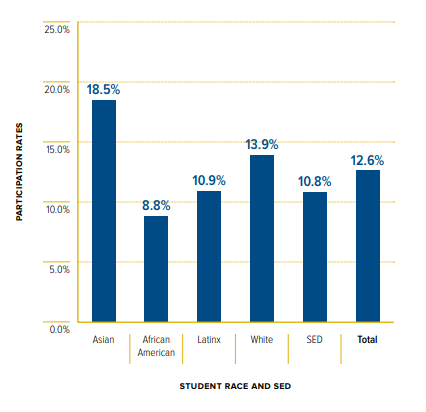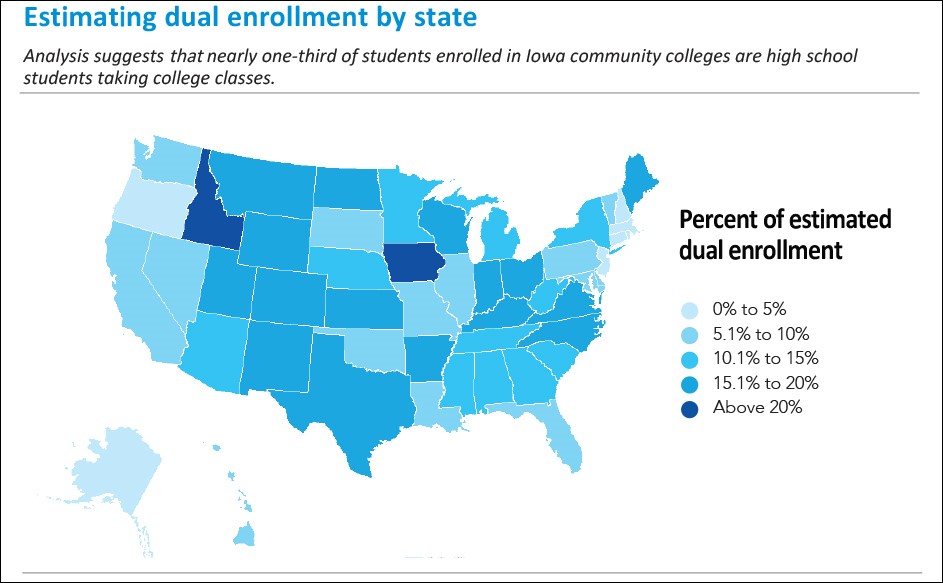Unlike other educational programs, the dual enrollment program is unique because it offers students a chance to earn collee credit opportunities and lower college costs. The program provides advancement opportunities for students and helps them access more higher-level courses than their current high school. According to the Executive Director of the National Alliance of Concurrent Enrollment Partnerships, about 2.4 million high school students were enrolled in dual-enrollment courses in 2018. Participation in dual enrollment is growing at 7 percent each year. This blog article presents the breakdown of high school students taking dual enrollment courses.
In Georgia, the number of students taking dual enrollment classes grew from 35,862 in 2017 to 43,639 in 2018. Other states showed similar trends. First-generation college students may also benefit from dual enrollment programs. About one-third of the college graduates are first-generation college students. While dual enrollment classes offer a college pathway, fewer Latinx, African American, and socioeconomically disadvantaged students participated in the programs (see Fig 1). Policy Analysis for California Education study found that high school students do not have equal access to dual credit opportunities. 12.6% of California high school seniors took Dual Enrollment classes in 2016-17 as compared to Georgia.
Fig 1: Community College Course Participation Among High School Students by Race and Socioeconomic Disadvantage, January 2020.

Source: The Center for Community College Leadership and Research
Fig 2. shows estimating dual enrollment by different states. Dual enrollment participation in Idaho and Iowa increased by big margin. The report suggests that nearly one-third of students enrolled in Iowa community colleges are high school students taking college classes. In Texas, student enrollment in these programs grew from 80,000 in 2008 to 151,000 in 2018. The dual enrollment participation in Florida is growing at a fast pace. In 2017-2018, around 70,000 students took dual credit classes at one of the state’s 28 public colleges. The published data from the Florida College System shows that the recent participation is a 30 percent surge if compared to 2014-2016 numbers. In Georgia, students enrolling in dual credit programs nearly doubled in the recent four years. The number grew from 27,000 students in 2016 to about 52,000 students in 2019 as per the state records.

Source: National Center for Education Statistics, June 2019
Let us take a look at the recent statistics. A new report from the National Student Clearinghouse (NSC) Research Center focused on dual enrollment participation in Spring 2020. As per the report, the dual enrollment in the US has increased by almost 7 percent this spring. According to the statistics, there was a 1.6% increase in dual enrollment programs in 2019, compared to a decrease of 1.2% in 2018. A record number of 722,843 students enrolled in dual-enrollment programs throughout the US this spring 2020. 71 percent of students were enrolled at a public two-year college, and 24% enrolled in a public four-year college.
The report is divided according to age, enrollment type, gender, and others. The leading states with a massive increase in dual enrollment programs are: Arizona (18,131), Utah (10,891), New Hampshire (5,600), and North Carolina (4,372). The top states with largest spring-to-spring dual enrollment decreases by number of students include: California (-28,139), Pennsylvania (-25,148), New York (-20,439) and Ohio (-17,691).
In conclusion, research shows a huge increase in dual enrollment programs since 2001. Participation in dual enrollment is growing at approximately 7 percent each year. The dual enrollment program has helped many students attain their goals because it not only gives students earlier access to post-secondary institutions, is a potential solution to education inequity, but also helps needy students financially long term. Owing to the popularity of dual enrollment during pandemic, the numbers are expected to grow in 2021.
Earl Brown Education Consulting provides services to help schools develop dual enrollment programs and initiatives. For more information, please visit www.ebedc.com or email us at letstalk@ebedc.com.
Sources: https://nscresearchcenter.org/wp-content/uploads/CTEE_Report_Spring_2020.pdf
